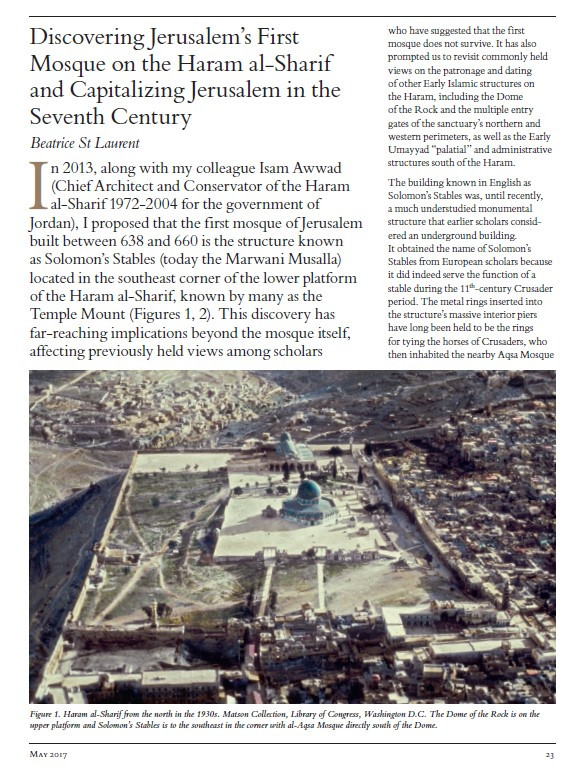
In 2013, along with my colleague Isam Awwad (Chief Architect and Conservator of the Haram al-Sharif 1972-2004 for the government of Jordan), I proposed that the first mosque of Jerusalem built between 638 and 660 is the structure known as Solomon’s Stables (today the Marwani Musalla) located in the southeast corner of the lower platform of the Haram al-Sharif, known by many as the Temple Mount (Figures 1, 2). This discovery has far-reaching implications beyond the mosque itself, affecting previously held views among scholars who have suggested that the first mosque does not survive. It has also prompted us to revisit commonly held views on the patronage and dating of other Early Islamic structures on the Haram, including the Dome of the Rock and the multiple entry gates of the sanctuary’s northern and western perimeters, as well as the Early Umayyad “palatial” and administrative structures south of the Haram. The building known in English as Solomon’s Stables was, until recently, a much understudied monumental structure that earlier scholars considered an underground building. It obtained the name of Solomon’s Stables from European scholars because it did indeed serve the function of a stable during the 11th-century Crusader period. The metal rings inserted into the structure’s massive interior piers have long been held to be the rings for tying the horses of Crusaders, who then inhabited the nearby Aqsa Mosque.
I agree to the terms outlined below:
You agree to upload and assign Mosqpedia Database the rights to use the content worldwide and in perpetuity across all current and future media platforms. Mosqpedia Database may edit, copy, adapt and translate your contribution.
The content will be distributed under the Creative Commons Attribution-Deed – Attribution-NonCommercial-NoDerivatives 4.0 International – Creative Commons
All data will be stored in line with data protection regulations.